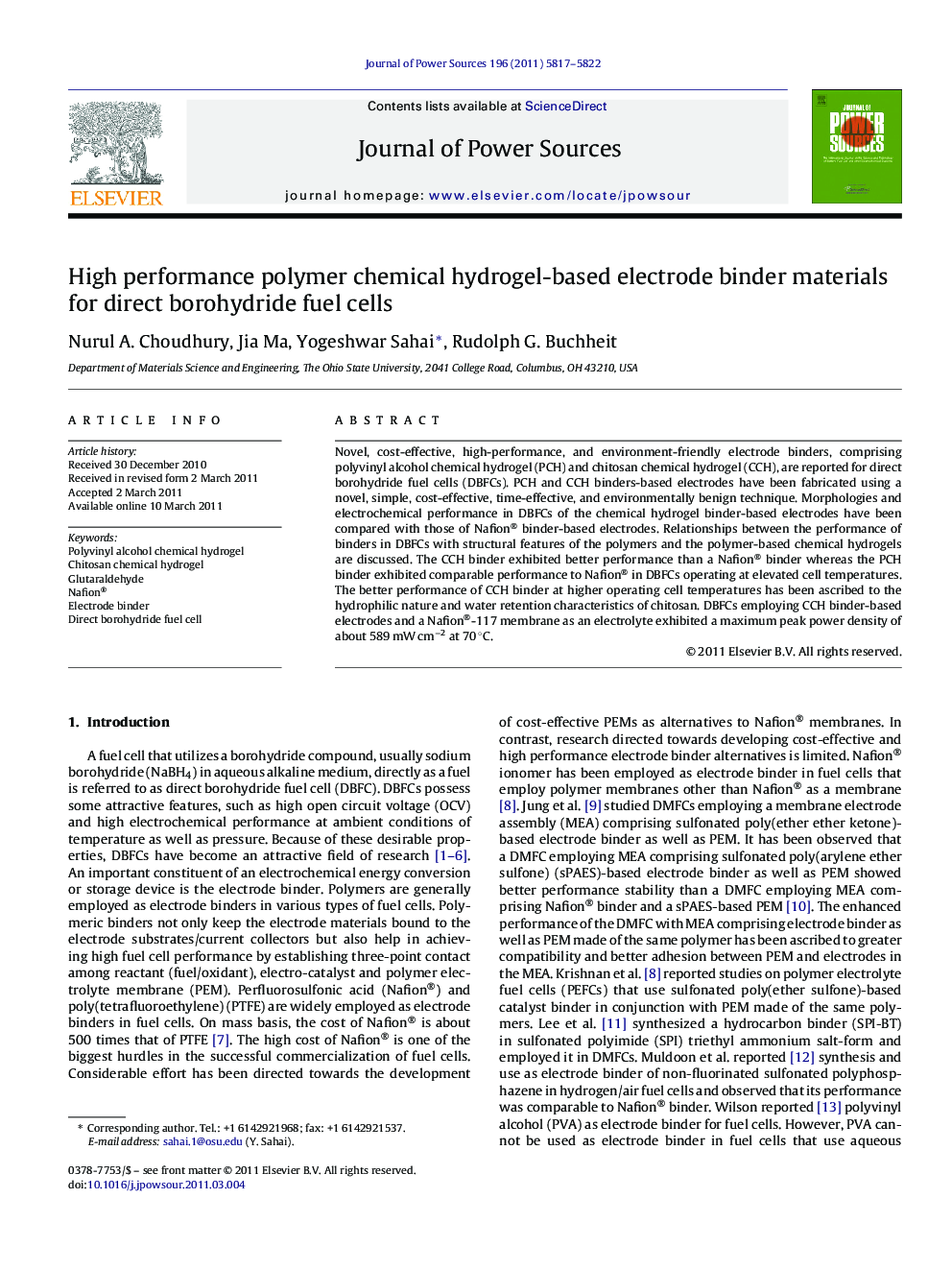| Article ID | Journal | Published Year | Pages | File Type |
|---|---|---|---|---|
| 1288932 | Journal of Power Sources | 2011 | 6 Pages |
Novel, cost-effective, high-performance, and environment-friendly electrode binders, comprising polyvinyl alcohol chemical hydrogel (PCH) and chitosan chemical hydrogel (CCH), are reported for direct borohydride fuel cells (DBFCs). PCH and CCH binders-based electrodes have been fabricated using a novel, simple, cost-effective, time-effective, and environmentally benign technique. Morphologies and electrochemical performance in DBFCs of the chemical hydrogel binder-based electrodes have been compared with those of Nafion® binder-based electrodes. Relationships between the performance of binders in DBFCs with structural features of the polymers and the polymer-based chemical hydrogels are discussed. The CCH binder exhibited better performance than a Nafion® binder whereas the PCH binder exhibited comparable performance to Nafion® in DBFCs operating at elevated cell temperatures. The better performance of CCH binder at higher operating cell temperatures has been ascribed to the hydrophilic nature and water retention characteristics of chitosan. DBFCs employing CCH binder-based electrodes and a Nafion®-117 membrane as an electrolyte exhibited a maximum peak power density of about 589 mW cm−2 at 70 °C.
► Polymer chemical hydrogels as electrode binders for direct borohydride fuel cells. ► Chitosan chemical hydrogel binder performs as good as Nafion® at low temperatures. ► Chitosan chemical hydrogel performs better than Nafion® binder at high temperatures. ► Polyvinyl alcohol chemical hydrogel performs as good as Nafion® at all temperatures. ► Better performance of chitosan at high temperature is due to its hydrophilic nature.
